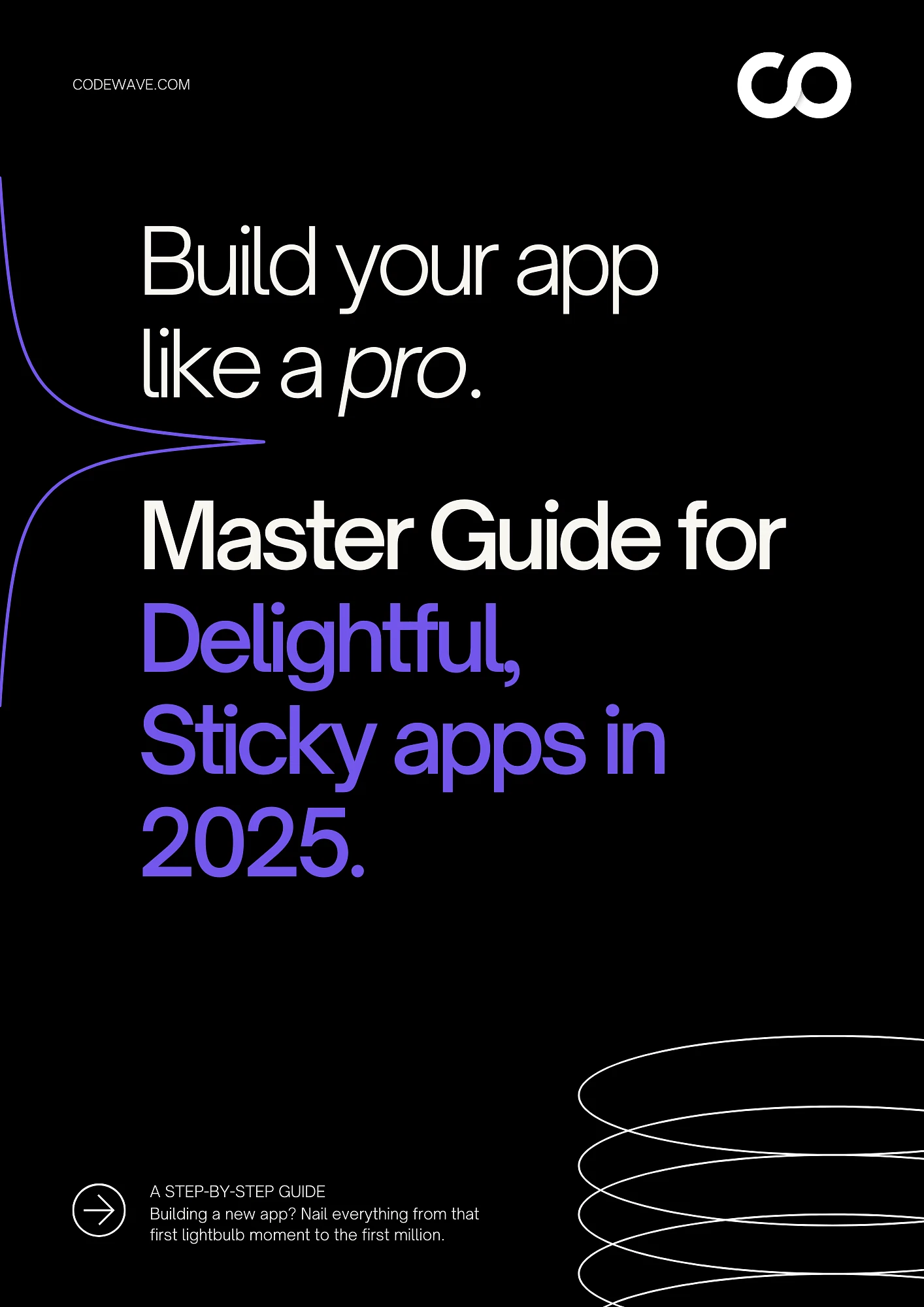“If AI can generate code, why should I pay more for a custom solution?” That question sounds practical until the product must scale, integrate, and pass audits. The real issue is value, not just expense. AI prototypes reduce effort, but they rarely deliver the architecture, reliability, and governance a growing business needs.
Organizations expect their software-based revenue to reach 29% by 2030, up from 7% in 2022, which raises the bar for what your software must achieve.
This blog explains how AI prototypes and custom builds differ, what each really costs, and when to choose one over the other.
Key Takeaways
- AI prototypes are great for quick validation, but they struggle with scale, deep integrations, security, and audits; most teams rebuild within a year or two once growth starts.
- Custom software costs more upfront, yet pays back through higher conversion, reliable integrations, clean data, and fewer rebuilds.
- The right choice depends on time horizon, risk, and the role the product plays in revenue and service quality.
- Use AI tools for short-lived demos or early tests; choose custom when you need ownership, compliance, and a roadmap that will evolve.
How Profitable are AI Prototypes?
AI-powered prototyping tools have made it possible to spin up basic apps, MVPs, or proof-of-concepts in record time, often without writing a single line of code manually.
Platforms like ChatGPT Code Interpreter can auto-generate functional prototypes based on text prompts, allowing teams to move from concept to demo in a matter of hours instead of weeks.
These tools are commonly used at the earliest stages of a product lifecycle. Startups rely on them to validate an idea before committing engineering resources, to build internal tools for limited use, or to create early demos for sharing with investors and stakeholders. This makes them attractive for teams under time pressure or with minimal technical bandwidth.
The appeal is clear:
- Rapid time-to-market: MVPs or demo versions can be built within hours or days, reducing the time between concept and feedback.
- Low upfront cost: Most platforms operate on freemium or low-cost plans, keeping early experimentation affordable.
- Minimal technical expertise: Anyone,even non-developers, can create functional prototypes without needing a whole engineering team.
However, their strengths are also their boundaries. These prototypes are best suited for short-term validation, low-traffic internal use, or limited stakeholder demos. Once a product starts handling real users, complex logic, or sensitive data, its limitations become clear.
Security is also a notable risk area. For example, Veracode’s 2025 GenAI Code Security Report found that about 45% of AI-generated code samples failed security tests across 80 coding tasks and more than 100 large language models.
Also Read: Integrating LLMs in AI Chatbots: A Complete Guide
What Is Custom Software Development and Why Businesses Still Choose It
Custom software development involves building a product tailored to your business, rather than forcing your needs into a standard template. The work begins with your goals and constraints, transforming them into an architecture, a data model, and user journeys that align with how your customers buy, use, and pay.
The result is a system that can scale, integrate, and pass audits while staying fast and reliable. Here’s how it works in practice:
1. Architecture design
Teams decide how services talk to each other, where data lives, and how requests flow from the browser to the database.
This is where choices about performance, scale, and fault tolerance are made. A good design keeps latency low, isolates failures, and leaves room for new features without rework.
2. Backend and Frontend Engineering
Engineers implement APIs, background jobs, and theuser interface. Controls for pricing, trials, and access live in the backend.
The frontend converts that logic into clear, actionable steps for users to complete. Error states, retries, and helpful guidance are built in so tasks finish on the first try.
3. Integration and Automation
The product connects to CRM, billing, payments, analytics, search, and any AI models you run. Data moves through stable contracts and event streams. Sales, marketing, support, and finance see the same truth because the system records the same events the same way.
4. Security and Compliance Layers
Access follows roles or attributes. Sensitive fields are encrypted. Every read and write is logged, including who performed the action and the reason.
Consent, retention, residency, and deletion follow policy. When an audit arrives, you can show evidence rather than assemble it under pressure.
5. Testing and Optimization
Quality checks run from unit tests to end-to-end flows. Real devices and networks are used to measure speed and accessibility. Telemetry shows where users drop off.
Teams ship small improvements, observe key metrics like conversion, error rate, and page speed, and respond accordingly.
Ready to turn a validated idea into a product users keep coming back to? Share your audience, goals, and the top three outcomes you want to hit. Codewave will map a clear path from prototype to launch with design sprints, build cycles, and live user tests that prove value.
Why AI Prototypes Often Fall Short: Key Limitations
While AI prototypes can offer rapid validation, they frequently encounter challenges that hinder their scalability and long-term effectiveness. Understanding these limitations is crucial for businesses considering AI solutions.
1. Data Quality Challenges
AI systems are highly reliant on clean, structured data. However, many businesses struggle with poor data quality, including missing values, duplicates, and imbalances within datasets. Inaccurate or biased data leads to flawed predictions and poor decision-making, which ultimately hampers AI’s effectiveness.
For instance, in sectors like healthcare, the lack of diverse datasets can lead to inaccurate models, causing AI to miss crucial insights. Ensuring data quality and balance is essential to avoid the risk of overfitting and inaccurate outcomes.
2. Difficulties in Integrating with Legacy Systems
AI prototypes are often built with the assumption that they will operate independently, but integration with existing business systems can be tricky. AI models often lack the flexibility to connect with legacy systems without significant additional work, creating gaps in functionality. This lack of integration can lead to inefficiencies, operational delays, and additional costs.
3. Scalability Limitations
AI prototypes are usually designed for limited testing scenarios, and their architecture might not be robust enough to handle increased demand. As your business grows and user traffic increases, the prototype may not be able to scale, leading to performance degradation and instability.
Many AI projects fail to reach full-scale production because their initial prototypes lack scalability.
4. Security and Compliance Gaps
Most AI prototypes are developed rapidly, often without considering the security and compliance standards required by industries like healthcare or finance. This leaves AI systems vulnerable to data breaches, regulatory non-compliance, and potential legal ramifications.
For example, AI tools might not have built-in mechanisms to handle sensitive data per regulations like GDPR or HIPAA.
5. Lack of Transparency and Explainability
AI models, especially those based on deep learning, can be “black boxes,” making it difficult to understand how they arrive at decisions. This lack of transparency is a major drawback in sectors that demand accountability, such as healthcare and finance. Without clear reasoning behind AI-generated decisions, businesses face challenges in building trust with users and stakeholders.
Also Read: Top 12 Tech Innovations and Trends in 2025 with Examples
The Real Cost Equation: Initial Spend vs Lifetime Value
Cost is not only what you spend on day one. It is the value your software returns over months and years through conversion, retention, lower ops effort, and fewer rebuilds. This includes multiple dimensions such as:
| Factor | AI prototype | Custom software |
| Upfront cost | $1,000–$2,000 | $30,000+ |
| Build time | Hours to days | 4–16 weeks |
| Scalability | Low | High |
| Custom logic | Limited | Unlimited |
| Security and compliance | Basic | Enterprise grade |
| Total ownership | No | Yes |
| Long-term ROI | Moderate | High |
Some additional considerations include:
1. TCO vs sticker price
AI tools look cheap until add-ons arrive. Forms, search, analytics, backups, and premium themes stack monthly fees. Custom builds trim waste with right-sized hosting, cold storage for rarely used data, and removal of unused plugins.
You can view unit costs, such as cost per request and cost per order, and maintain them at a steady level.
2. Rebuild tax
Prototypes often break at scale or during integration work. Migrating later means new design, new code, and a risky cutover. You also lose momentum while teams pause roadmap work. Building for growth early avoids paying twice.
3. Conversion money left behind
Template limits cap UX and performance gains. Small lifts in speed and clarity move real revenue. Custom stacks let you run precise tests on key journeys and keep the wins.
4. Compliance exposure
If you need consent logs, residency, or field-level access, basic platforms add process overhead and audit pain. Custom systems integrate these controls into the product, reducing risk and effort.
Also Read: Understanding AI Security Risks and Threats
The choice is not always about hype but about fit for purpose. Let’s compare both paths against the demands of scale, compliance, data, and ownership.
Can AI Prototypes Replace Custom Builds?
AI prototypes are useful for speed and early validation, but they rarely meet the demands of a product that must scale, integrate, and pass audits. Confidence is mixed even among developers.
Stack Overflow’s 2024 survey reports only 43% feel good about AI output accuracy, with 31% skeptical.
Let’s compare these two on further grounds:
| Capability | AI prototype | Custom software |
| Scalability under load | Demo code often breaks with real traffic and complex flows. | Planned for concurrency, caching, and regional growth. Performance stays steady as volume rises. |
| Compliance | Basic controls. Limited audit trails and policy enforcement. | Role or attribute-based access, encryption, consent logs, residency, and evidence for audits. |
| Data governance | Limited control of storage, access, and retention. | Clear schemas, lineage, and policies. One source of truth for product, sales, and finance. |
| Integrations | Shallow connectors to CRM, ERP, billing, analytics. Rewrites later. | Stable APIs and event contracts across systems. Automations that hold up in production. |
| Customization | Template ceilings block workflows and pricing logic. | Unlimited rules and journeys matched to your model, which lifts conversion and retention. |
| Maintenance | Black-box logic and unsupported libs create upgrade pain. | Tested codebase, CI/CD, and observability. Faster fixes and fewer regressions. |
| Brand and UX | Constrained theming leads to sameness and lower trust. | Design systems and crafted flows that signal quality and reduce support. |
| Reporting and ownership | Partial data and vendor limits. | Full ownership of code and data, governed metrics, and trustworthy reporting. |
| Total cost over time | Cheap to start, expensive to rebuild. | Higher upfront, lower lifetime cost through reliability and fewer resets. |
Struggling with Generic Software Solutions? Let’s build a custom solution that’s tailored to your specific needs and goals. With Codewave, you get faster delivery, scalable solutions, and an experience that’s built to evolve with your business. Reach out todayto start building software that actually works for you.
When to Use AI Prototypes vs Custom Development
Pick the path that matches your goal, time horizon, and risk tolerance. The two lists below give out clear triggers for each choice.
Use AI prototypes when
You need a quick signal, not a production system. The aim is to learn and gather stakeholder feedback with minimal expenditure.
- You are validating an idea fast. Collect interest, emails, or early feedback this week.
- You need a short-lived demo. A clickable concept for pitching or usability testing that you will discard later.
- The app avoids sensitive data and complex logic. No regulated data, role-based access, or heavy workflows.
- Traffic will stay low. Limited users and predictable usage that will not stress the system.
- You accept platform limits. Basic SEO, limited integrations, and template-driven layouts are fine for now.
Choose custom development when
Your product must earn revenue, protect trust, and keep pace with growth. The goal is control, reliability, and room to expand.
- The software drives revenue or service quality. Conversion, retention, or ticket resolution depends on it.
- Scale, reliability, and security matter. Expect traffic peaks, strict uptime targets, access controls, and audit trails.
- You need deep integrations. Clean links to CRM, ERP, billing, analytics, warehouse, and AI services.
- Your roadmap will evolve. Frequent releases, pricing changes, new regions, and partner workflows.
- You need clean data and ownership. One event schema, governed metrics, and full control of code and reporting.
How Codewave Used Custom Development Services to Transform Fortis Healthcare’s Digital Patient Experience
When the COVID-19 pandemic changed how people accessed healthcare, Fortis Healthcare faced a significant challenge: patients were hesitant to visit hospitals, yet demand for consultations remained high.
At the same time, their existing website lacked the intuitive structure and personalization required to guide users to the right services quickly. They needed a solution that could bridge the gap between safety, accessibility, and seamless care delivery, all without disrupting ongoing operations.
Codewave’s Solution
- Online consultations: Built a secure, scalable telemedicine layer inside Fortis’s stack with video visits, scheduling, and patient data protection.
- Personalized website: Added intent-based search and a clearer menu so patients can find doctors, services, and departments by symptom, preference, or location.
- UX and performance: Improved load times, mobile usability, and accessibility to raise completion rates across key tasks.
The Outcome
Fortis kept care delivery running remotely and made it easier for patients to access the right services quickly. Engagement rose, online consultations grew, and satisfaction improved.
This custom web development solution addresses a critical problem and establishes a scalable foundation for the business. Explore more outcomes like this in the Codewave portfolio.
Conclusion
The tradeoff comes down to short-term savings versus long-term earnings. AI prototypes are useful for quick validation and demos, but they rarely scale, integrate deeply, or satisfy audits once the stakes rise.
Custom software becomes a durable asset that lifts conversion, reduces rework, and supports growth without rebuilds. Treat software as an investment in revenue and reliability, not a one-time expense.
If you’re looking for a plan that drives results and reduces risk, Codewavedevelops and delivers production systems across web, mobile, data, AI, integrations, security, and QA.
Share your goals and your current stack, and we will map a clear path to results. Contact us today!
FAQs
Q: How do I estimate payback for a custom build?
A: Start with traffic, current conversion, and revenue per conversion or lead value. Model a conservative lift from speed and UX fixes, then divide project cost by the monthly uplift to get payback months. If you land inside one or two quarters, the case is strong.
Q: Can I start with an AI prototype and migrate later without losing time?
A: You can, but plan migration early. Define a stable event schema, keep content in a portable CMS, and avoid platform-specific plugins. A staged rebuild with parallel tracking reduces risk when you switch.
Q: What are non-negotiables for regulated industries?
A: Proven access control, encryption at rest and in transit, audit logs, consent and retention policy enforcement, and data residency. Choose an approach that can produce evidence on demand, not just promises in docs.
Q: How do I avoid template sameness without blowing the budget?
A: Use a design system and a headless CMS. You get fast page creation for marketing while keeping unique components and interactions where they drive conversion.
Q: What should I instrument from day one?
A: Track page speed, errors, and key funnel steps. Capture a clean event schema tied to users and accounts, then expose a shared metric layer so product, sales, and finance see the same numbers. This prevents disputes and speeds decisions.
Codewave is a UX first design thinking & digital transformation services company, designing & engineering innovative mobile apps, cloud, & edge solutions.







